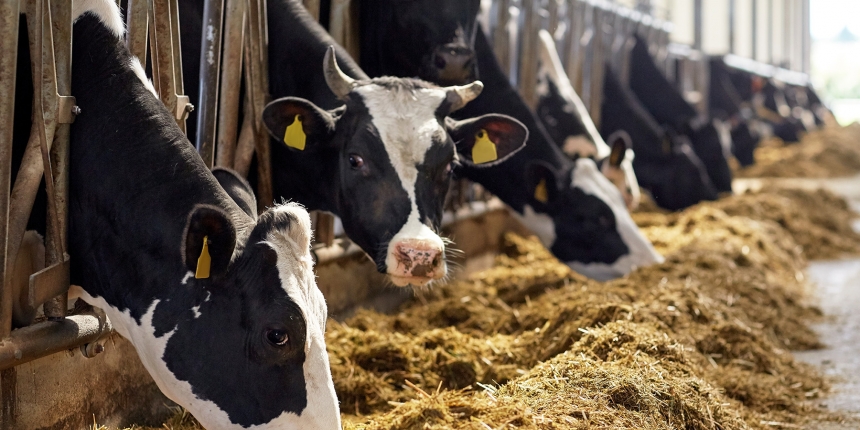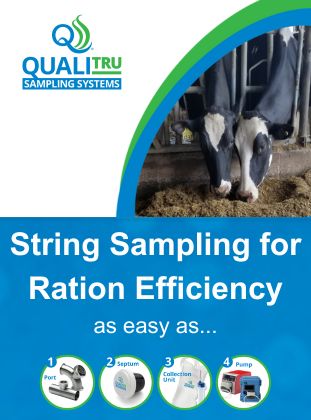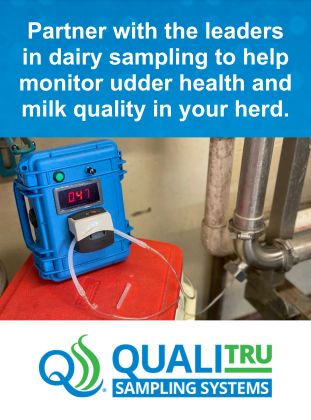Maximizing Efficiency with Feed Management

By Jaclyn Krymowski.
Maximizing the efficiency of dairy operations requires a multifaceted approach that encompasses reproduction, overall management and financial strategies. Among these, cow nutrition stands out as a pivotal element that inevitably influences various facets of a farm’s performance. Mastering feed efficiency while maintaining optimal nutritional value not only elevates the well-being of your cows but will also cascade positive effects throughout all other metrics in your herd, significantly impacting the bottom line.
Managing Ingredients
Effective nutritional management begins with thoughtful ingredient selection for the ration. This involves more than just compiling an extensive list of feed components to achieve desired outcomes. Instead, it requires making informed decisions based on factors such as availability, nutritional value, cost, and digestibility From a practical and labor side, you also want to consider the amount of handling, storage and potential processing (i.e. mixing) that the ration will require from start to finish.
Another key aspect that may get overlooked to maximize the overall diet is forage and fiber. Good forage that provides a high plane of nutrition can notably reduce the need for more expensive grains, supplements and other additives.
Both hay and silage quality stems from crop genetics and management of the harvest. If you are supplying your herd forages that you plant and harvest, you have full control over harvesting at the optimal window between being immature and too mature. Both ends of the spectrum can impact the digestibility and nutrients supplied to the animal.
When you are buying crops or forages, always get an analysis to review with your nutritionist before purchase. This will not only ensure you are paying for the truest value, but can also determine if the other ingredients you have to complete the diet will be sufficient.
Feeding various byproducts are among the most affordable, easiest ways to supply additional nutrients. The tricky aspect of feeding byproducts is to ensure consistency, as some are not fully guaranteeable.
Managing Cow Efficiency
Once the ration is balanced with the most cost effective and nutrient dense ingredients, stage of lactation is the next detail to factor in.
Authors Rick Grant, of the Miner Agricultural Research Institute and Paul Kononoff, University of Nebraska-Lincoln extension dairy specialist write in their bulletin Feeding to Maximize Milk Protein and Fat Yields, “The importance of maximizing feed intake is related to minimizing negative energy balance during early lactation.”
When cows are moving into a positive energy balance or have more energy than what is needed to maintain, the cow will gain weight and the milk production will contain normal amounts of protein and fat.
The impact of the ration on the rumen is key to efficiency. Maintaining rumen and overall gut health is important in any feeding program.
Poor rumen health not only impacts the efficiency in converting feed, but it takes away from cow comfort too. For example, a low pH balance will decrease digestibility of fiber.Other nutrients will impact microbial protein.
To improve efficiency, feed cattle in groups or pens of their peers. This helps better meet requirements without having to change a ration per cow because it supplements like animals based on their stage or position in the herd.
When possible, keeping groups according to their lactation stages is ideal as animals early or late in their production will respond differently to the same diet. Customizing as much as possible according to these dietary needs may require more time to calculate rations, but it will ensure that animals are making the most of what they are offered.
The Overall Impact
Having the right ingredients and being resourceful rather than throwing a long list of ingredients into the mixer wagon can help streamline the process. A ration that is complete with only minimal ingredients will cut down the time to weigh out and mix all of them.
Using artificial intelligence to monitor or robots to keep feed pushed up can help with not only the feeding process, but trends and ways to make further improvements. And we can expect more tools to be developed (lely already has a fully hands-off robotic system that does everything from mixing to feeding).
Adoption of new technologies have stemmed from this push to reduce environmental impact and this technology aids in improving production, economics and farm sustainability.
Precision feeding implemented through the entire feeding process can provide positive results in production. And with precision feeding, ingredients can better meet the nutrient needs.
Dairy herds with properly managed feed programs can reflect positively on production and herd health (and cow health). Pen management, ingredient management, and animal management all play a role in the efficiency of feed.
From the scales in our mixer wagons to monitor bands and artificial intelligence, there is a plethora of objective data to lend support in making smart decisions in cattle management. Those decisions don’t operate in a vacuum and involve feed management alone. They also consider many other processes on the farm.



